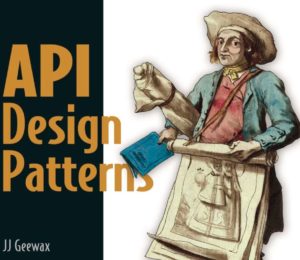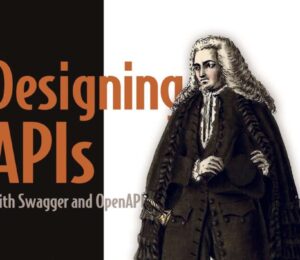OpenJDK Migration Book Review
- October 04, 2023
- 2245 Unique Views
- < 1 min read
Don’t Forget to Share This Post!

Azul Platform Core is the #1 Oracle Java alternative, offering OpenJDK support for more versions (including Java 6 & 7) and more configurations for the greatest business value and lowest TCO.

This user guide provides a brief history of Java EE/Jakarta EE and a detailed overview of some of the specifications that will be updated in Jakarta EE 11.

What do you know about the code changes that were just introduced into the codebase? When will you notice if something goes wrong?
Contact us to get your ad seen by thousands of users every day!
[email protected]Don’t Forget to Share This Post!
Software Architect at ASML
Beyond Keywords: Implementing Semantic Search in Java With Spring Data (Part 1)
Anahata: A Pure-Java, Apache Licensed, Open Source AI Agent for NetBeans 28 launched today
Preparing for Spring Framework 7 and Spring Boot 4
Understanding MCP Through Raw STDIO Communication
Spring Boot 4 OpenTelemetry Guide: Metrics, Traces, and Logs Explained
Dissection of Joeffice: Open Source Office Suite in Java
Project Panama for Newbies (Part 1)
Rate limiting with Redis: An essential guide
🧱 Monolith or 🧩 Microservices in 2025?
Project Panama for Newbies (Part 2)
foojay: A Place for Friends of OpenJDK
Dashboard for OpenJDK Update Release Details
JDK14: New Features and Enhancements
Fun with Flags: My Top 10 Resources for JVM Flags
Performance of Modern Java on Data-Heavy Workloads: Real-Time Streaming
Performance of Modern Java on Data-Heavy Workloads: Batch Processing
How does Java handle different Images and ColorSpaces – Part 1
How does Java handle different Images and ColorSpaces – Part 2
How does Java handle different Images and ColorSpaces – Part 3
How does Java handle different Images and ColorSpaces – Part 4
Indexing all of Wikipedia, on a laptop
Working with Multiple Carets in IntelliJ IDEA
Clean Shutdown of Spring Boot Applications
Java 17 on the Raspberry Pi
Project Panama for Newbies (Part 1)
How to Create Mobile Apps with JavaFX (Part 1)
Beginning JavaFX Applications with IntelliJ IDE
Foojay Slack: bit.ly/join-foojay-slack
SpringBoot 3.2 + CRaC
Creating Scalable OpenAI GPT Applications in Java
Azul Platform Core is the #1 Oracle Java alternative, offering OpenJDK support for more versions (including Java 6 & 7) and more configurations for the greatest business value and lowest TCO.
Learn about a number of experiments that have been conducted with Apache Kafka performance on Azul Platform Prime, compared to vanilla OpenJDK. Roughly 40% improvements in performance, both throughput and latency, are achieved.
This review is about API Design Patterns by JJ Geewax from Manning. Check it out and if you’ve read it too, what did you think?
This review is about Designing APIs with Swagger and OpenAPI by Joshua S. Ponelat and Lukas L. Rosenstock from Manning.
There is no better time than the present for a book such as this, which can surely be seen to be some kind of Skaffold Bible.
The author provides a complete and thorough overview of the central issues faced by users of Kubernetes, presents Skaffold as a solution, highlights its features and pitfalls, while placing it within the context of the broader ecosystem of comparable solutions.
Some books were written to be read once and put aside, others to be read thoroughly several times and then to be placed behind glass to be broken in case of emergency.
This book is of the latter kind—once you’ve read through it a few times, and dipped into the areas that speak to you most, you want to have it nearby both as a PDF and in hard copy format—as a backup just in case you can’t find that PDF at the crucial moment when you really need to have a response at hand in times of crisis.
Shai Almog’s “Java Basics: A Practical Introduction to Full Stack Java” more than lives up to its title. And how could it be otherwise, with its highly Java driven and opinionated author.

Azul Platform Core is the #1 Oracle Java alternative, offering OpenJDK support for more versions (including Java 6 & 7) and more configurations for the greatest business value and lowest TCO.

What do you know about the code changes that were just introduced into the codebase? When will you notice if something goes wrong?

This user guide provides a brief history of Java EE/Jakarta EE and a detailed overview of some of the specifications that will be updated in Jakarta EE 11.
Contact us to get your ad seen by thousands of users every day!
[email protected]This review is about API Design Patterns by JJ Geewax from Manning. Check it out and if you’ve read it too, what did you think?
This review is about Designing APIs with Swagger and OpenAPI by Joshua S. Ponelat and Lukas L. Rosenstock from Manning.
There is no better time than the present for a book such as this, which can surely be seen to be some kind of Skaffold Bible.
The author provides a complete and thorough overview of the central issues faced by users of Kubernetes, presents Skaffold as a solution, highlights its features and pitfalls, while placing it within the context of the broader ecosystem of comparable solutions.




Comments (0)
No comments yet. Be the first.